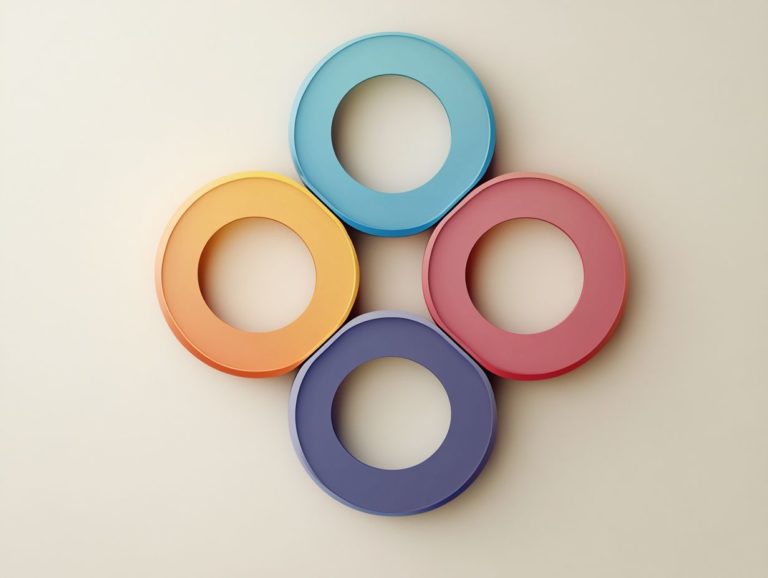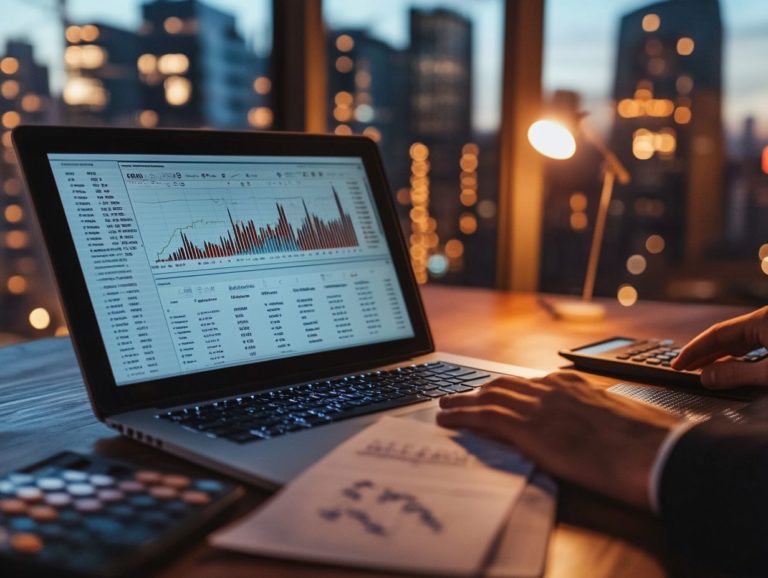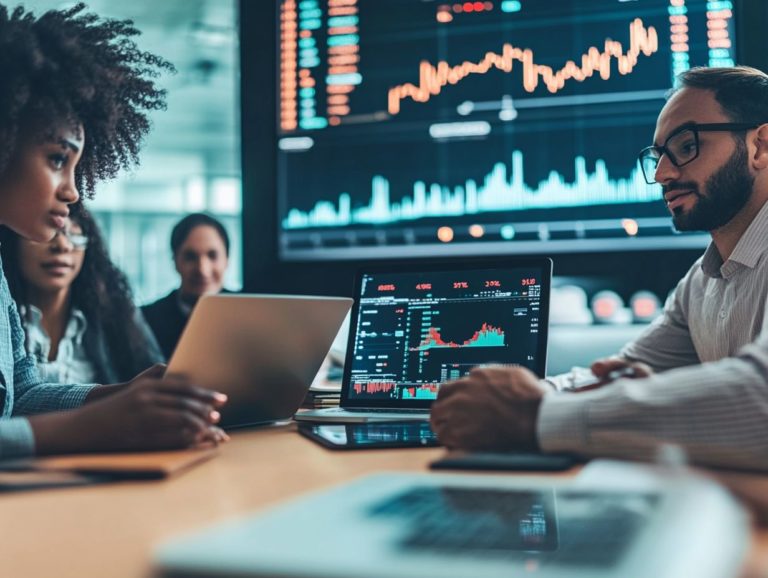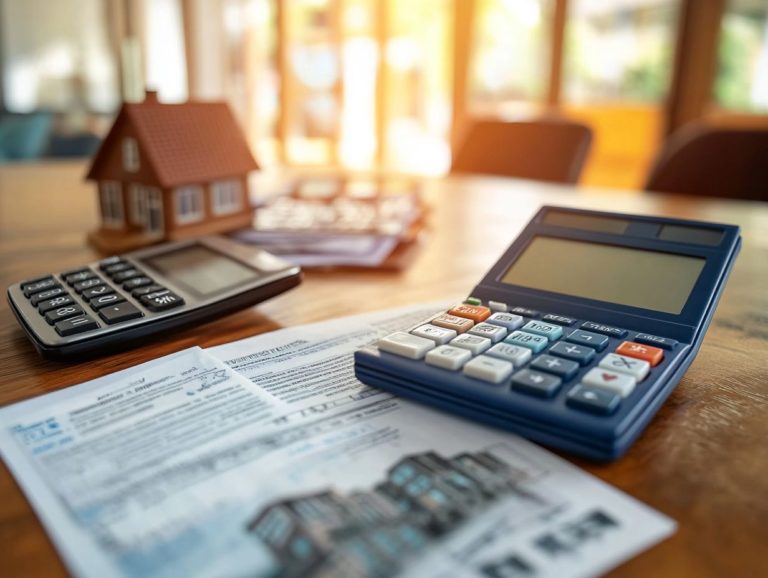Analyzing Risk in Precious Metals Investments
Investing in precious metals offers a great chance for both security and potential returns.
From gold and silver to platinum and palladium, each metal has unique traits that attract investors. However, challenges exist, such as market volatility and economic uncertainties that can affect your investments.
This article explores different types of precious metals, outlining their benefits and risks while providing effective strategies for managing those risks.
Whether you’re a seasoned investor or just starting, understanding precious metals is key to making informed decisions in this dynamic market.
Contents
- Key Takeaways:
- Understanding Precious Metals Investments
- Benefits of Investing in Precious Metals
- Risks Associated with Precious Metals Investments
- Market Volatility and Economic Factors
- Measuring Risk in Precious Metals Investments
- Strategies for Mitigating Risk
- Frequently Asked Questions
- What is meant by “analyzing risk” in precious metals investments?
- Why is it important to analyze risk before investing in precious metals?
- What are some common risks associated with precious metals investments?
- How can an investor manage risks in precious metals?
- What strategies are available for assessing risk in precious metals investments?
- How can investors monitor risk after investing in precious metals?
Key Takeaways:
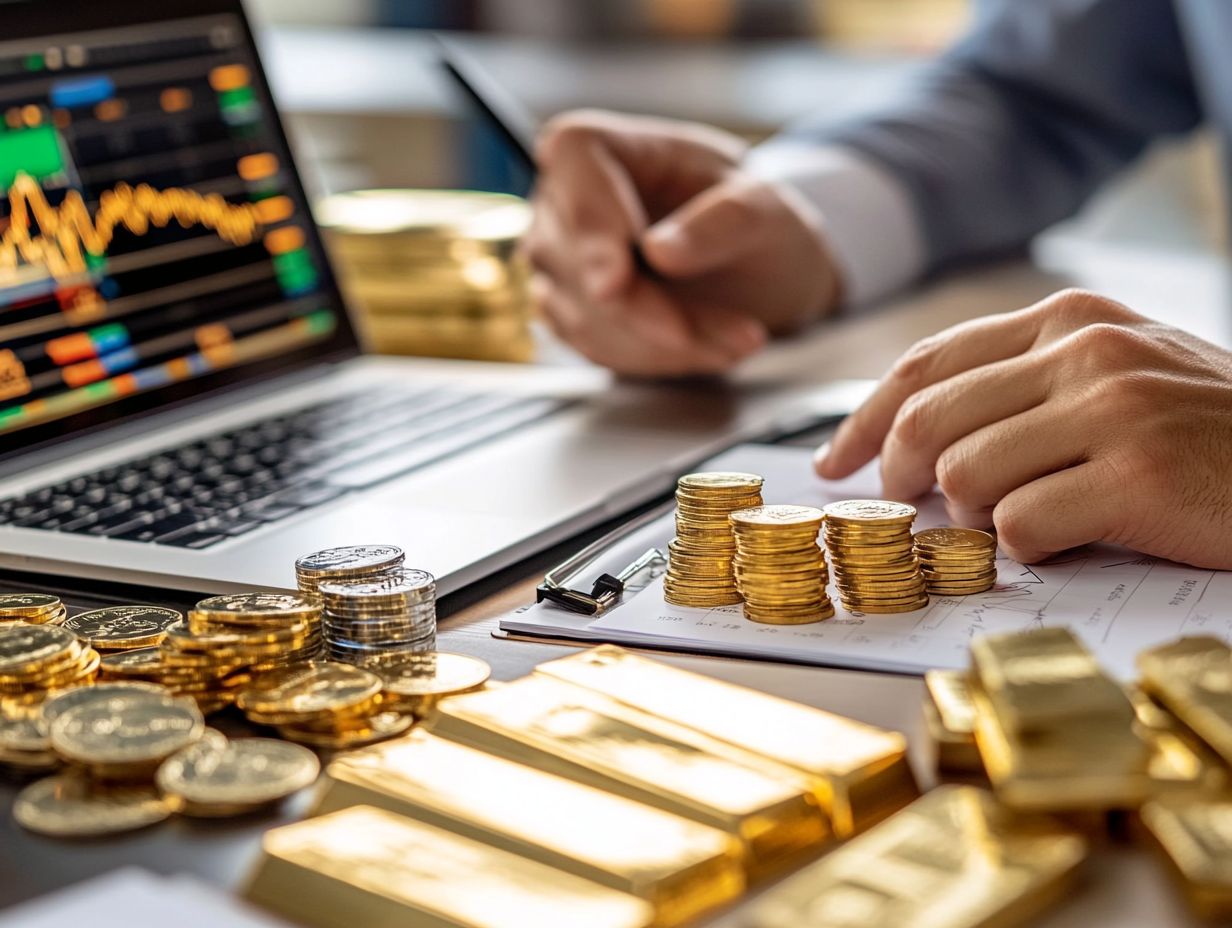
- Diversifying with precious metals protects against inflation.
- Understanding key metrics aids in managing risks.
- Timing strategies can enhance potential returns.
Understanding Precious Metals Investments
Grasping precious metals investments is essential for anyone looking to improve their investment portfolio.
Precious metals like gold, silver, and platinum protect your money from losing value and serve as valuable assets in changing market conditions.
These metals are affected by various factors, including economic indicators, supply and demand, and geopolitical events. Thus, they are vital for your market analysis, especially if you aim to hone your trading strategies.
Types of Precious Metals and Their Uses
Precious metals are categorized into several types, with gold, silver, and platinum being the most recognized for industrial applications and investment potential.
Each metal has unique characteristics suited for various uses. For example, gold s excellent malleability and resistance to corrosion make it ideal for intricate jewelry and essential in electronics, where reliability is crucial.
Silver is known for its outstanding conductivity, playing a key role in industries like solar energy and photography. Platinum, known for its rarity, is significant in car parts that reduce harmful emissions and luxurious jewelry.
Together, these precious metals form a resource that offers both aesthetic appeal in adornments and functional utility across many sectors.
Benefits of Investing in Precious Metals
Investing in precious metals can significantly boost your financial future! Not only does it diversify your portfolio, but it also serves as a strong protection against inflation.
Precious metals also help you keep your money safe over time.
Portfolio Diversification and Inflation Hedge

Diversifying your portfolio with precious metals is a smart strategy, as these assets effectively guard against inflation and market fluctuations.
In uncertain economic times, when stock markets can be unpredictable and bonds may not provide the usual safety, including metals like gold, silver, and platinum in your investment mix becomes essential.
These tangible resources often hold their value and can even increase in worth while other assets struggle. By allocating a portion of your investments to precious metals, you create a resilient strategy that not only protects against downturns but also helps you seize opportunities from volatility.
Risks Associated with Precious Metals Investments
While investing in precious metals offers many benefits, it’s essential to understand the criteria to use for precious metals investment and the risks involved.
Market volatility, price fluctuations, and changing economic conditions can all affect your returns, so being well-informed is key to navigating this landscape effectively.
Don’t wait explore how precious metals can fortify your investment journey today!
Market Volatility and Economic Factors
Market volatility is influenced by economic factors. Key indicators and geopolitical events can greatly affect investor behavior and the prices of precious metals.
For example, fluctuations in interest rates can alter inflation expectations. This directly impacts the demand for gold and silver.
Shifts in global trade policies often lead investors to seek safe-haven assets, subsequently driving up metal prices. The interplay between currency strength and precious metals frequently mirrors investor sentiment.
It s essential to stay informed about these evolving economic trends to make well-informed investment decisions.
Measuring Risk in Precious Metals Investments
Measuring risk in precious metals investments is essential for successful trading. Implementing strong risk management strategies, including understanding how to protect your precious metal investments, is key to safeguarding your assets.
Key Metrics and Indicators
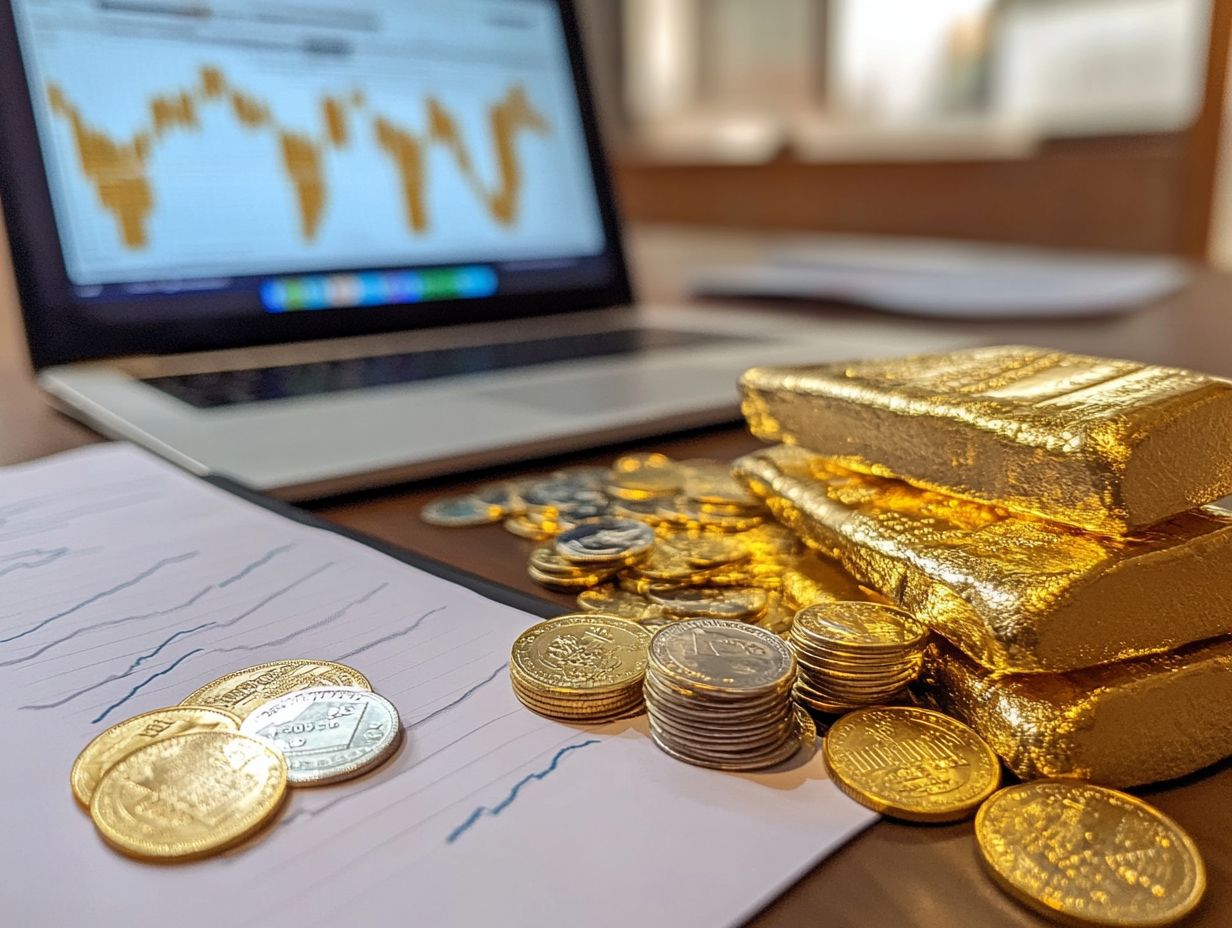
Key metrics and indicators, such as options Greeks and risk-reward ratios, are essential for evaluating potential trading outcomes in precious metals investments.
These analytical tools help measure how sensitive an option’s price is to various factors. This includes shifts in the underlying asset’s price and the passage of time affecting prices.
Understanding volatility indices can significantly enhance your ability to forecast future movements. Moving averages are also invaluable for identifying trends over time.
By integrating market indicators like the relative strength index (RSI) and Bollinger Bands, you position yourself to make informed decisions. Effectively interpreting these metrics sharpens your trading strategies and bolsters your risk management efforts.
Strategies for Mitigating Risk
Implementing effective strategies to mitigate risk is essential for your success in investing in precious metals for retirement. Hedging and diversification are key components of a robust approach that can safeguard your investments.
Diversification and Timing Strategies
Diversification and timing strategies are crucial for optimizing returns and managing risks in precious metals investments, particularly during market fluctuations.
By spreading your investments across various precious metals like gold, silver, and platinum, you can reduce your exposure to the volatility of any single asset. This approach not only mitigates risk but also allows you to capitalize on different market dynamics.
Understanding the timing of your market entry and exit points can amplify the benefits of diversification. For example, during periods of economic uncertainty, precious metals often see an increase in value. It s crucial to pinpoint the most opportune moments to adjust your portfolio.
Incorporating these strategies creates a more resilient investment framework that holds strong during turbulent economic times.
Frequently Asked Questions
What is meant by “analyzing risk” in precious metals investments?

Analyzing risk in precious metals investments refers to evaluating and assessing the potential risks associated with investing in these assets. This includes examining factors like market volatility, economic conditions, supply and demand, and geopolitical events that could impact their value. Understanding the importance of research in precious metal investing is crucial for making informed decisions.
Why is it important to analyze risk before investing in precious metals?
Analyzing risk is crucial before investing in precious metals because it helps investors make informed decisions. By spotting trends in precious metal investment, understanding potential risks can help avoid losses and maximize returns.
Start managing your risks today to secure your financial future!
What are some common risks associated with precious metals investments?
Investing in precious metals comes with risks. For example, exploring gold mining stocks can be influenced by market fluctuations, economic downturns, and changes in supply and demand, all of which can affect your investment.
Geopolitical events and currency devaluation are also significant factors. For instance, gold can be particularly sensitive to inflation, while silver often reacts to industrial demand.
How can an investor manage risks in precious metals?
Investors can manage risks through portfolio diversification and setting realistic goals. Conducting thorough research is essential.
Working with a knowledgeable financial advisor can provide valuable support. They help craft a balanced investment strategy tailored to your needs.
What strategies are available for assessing risk in precious metals investments?
Investors have various strategies for assessing risk. These include looking at price trends, market dynamics, and economic conditions.
Technical analysis involves studying price charts, while fundamental analysis examines underlying market factors. Trend analysis observes patterns over time.
How can investors monitor risk after investing in precious metals?
Monitoring risk post-investment is crucial. Regularly review market trends and economic news to stay informed.
Geopolitical events can also impact your investments, so keep an eye on global developments. A financial advisor can provide ongoing support to manage these risks effectively.



